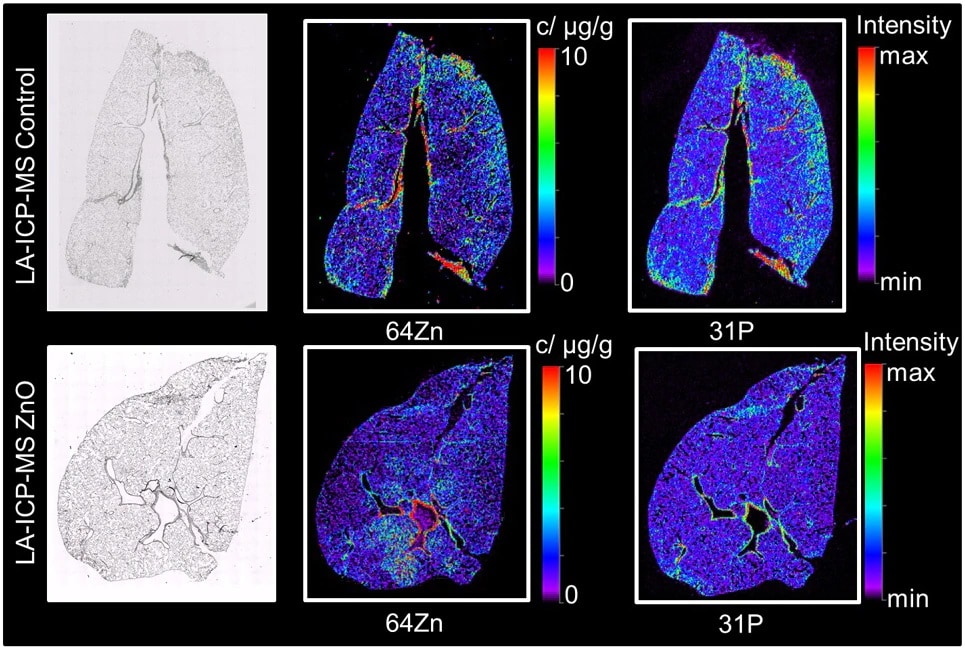Bioimaging to determine the distribution of nanoparticles and phospholipids in lung tissue
Nanoparticles such as zinc oxide (ZnO) and cerium oxide (CeO₂) are used in a wide range of applications, including catalysts, abrasives, paints, and cosmetics. However, there is a concern that inhaling nanoparticles may cause lung diseases such as phospholipidosis and pulmonary proteinosis, which may affect the human body. The alveoli contains surface active substances that reduce the surface tension at the air-liquid interface and facilitate breathing. Lung surfactant, which contains phospholipids and triglycerides, is distributed in certain amounts in the alveoli, but it causes disorders when their amounts increase.
Here, we combined the imaging techniques laser ablation-inductively coupled plasma-mass spectrometry (LA-ICP-MS) to observe the distribution of nanoparticles(Zn) and lung surfactant(P) including phospholipids in lung tissue.

Imaging of Lung Sections of Rats Exposed to Zinc Oxide Nanoparticles
(Top: Control rats, Bottom: Zinc oxide nanoparticle-exposed rats)
Using LA-ICPMS, the distribution of Zn in lung tissue and phosphorus derived from lung surfactant can be observed. It can be seen that the distribution of Zn in the lung tissue of control rats is uniform compared to that of rats exposed to ZnO nanoparticles. On the other hand, the distribution of phosphorus is not significantly different in either lung tissue.
Acknowledgment: The authors thank Antje Vennemann and Martin Wiemann, IBE R&D gGmbH, for preforming animal studies.
For Research Use Only. Not for use in diagnostic procedures.
This publication may contain references to products that are not available in your country. Please contact us to check the availability of these products in your country.


